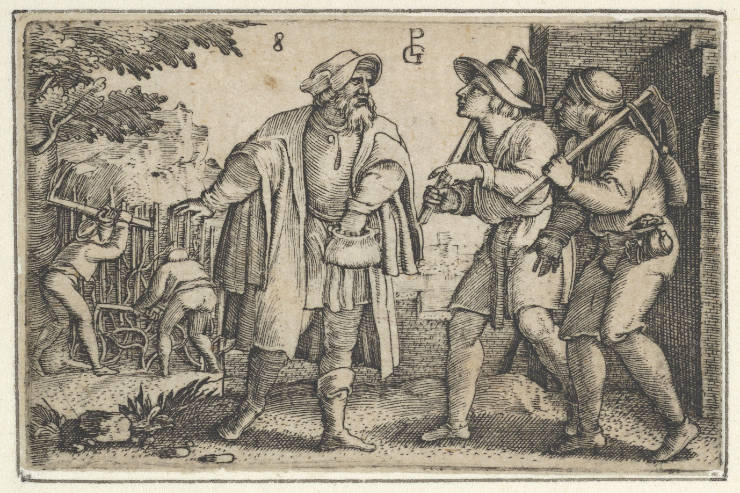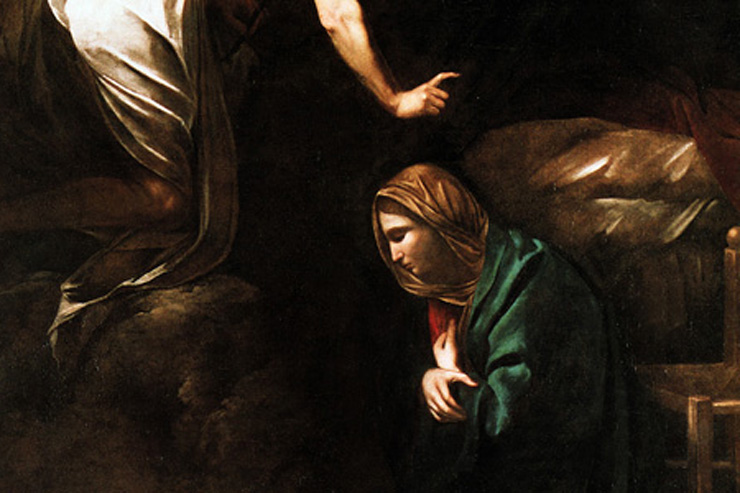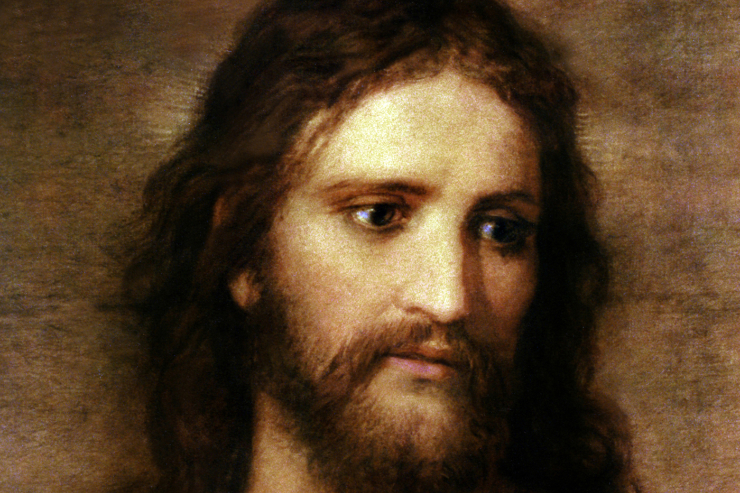The love in which God embraces each of us is one of the great truths revealed to us throughout salvation history, but especially through and in Jesus Christ. To come to a better and deeper understanding of this love, we are continually invited by God into a deeper communion of prayer with Him… to come to know Him as He is.
God, the Father loves so perfectly that His spoken word is eternally life-giving… He speaks with such love that his Word is eternally a Person… His Word is God, the Son.
The love of the Father for the Son and the Son for the Father is so life-giving and so perfect, that from it proceeds from all eternity a Person… the Holy Spirit.
The Blessed Trinity is a communion of love by a communion of persons; one God, yet three divine persons: Father, Son and Holy Spirit.
Man and woman are created in this image—the Image of God. We too are called to a life of love—principally a communion of love within the family.
This love is the love of a covenant… In a covenant, we exchange persons, not things, goods or services.
So what exactly is this “covenant” love? Love, according to St. Thomas Aquinas, is “willing the good of the other as other.”
Love is the giving of everything by one for the other… being willing to sacrifice one’s strength to bear up another’s weakness… and to do so without expectation of what’s in it for me. It is selfless, unconditional, outward looking and totally life-giving.
This is sacred love. And in a fallen world, such love always entails suffering because we are not yet perfect.
We lost knowledge of this love through Original Sin. Ever since The Fall, God has been fathering his people, preparing us to both know and live this truth again.
To some degree, we retained a desire for this love… a desire for God. He has continually called us to communion with Him. But, we have often misdirected our desire for God’s love to be a desire for things—even treating other persons as things or objects of our desire. But, true love never treats persons as things! And true love never mistakes the created for the Creator!
God’s plan to repair our brokenness, His plan for our redemption, involved a series of ever-expanding covenants (of love) between Himself and His people.
In Genesis 12, we see the beginning of the establishment of His Covenant with Abram, soon to be renamed, Abraham. And because love in a fallen world entails suffering, we will see in Genesis 15 the Covenant enacted by the ritual walking by the parties to the covenant between the two halves of sacrificed animals. Abram and God walked between the severed halves.
Although God and Abram enjoyed a relationship, mankind was not ready to see God as He is… was not ready to be fully restored. That is why we see God symbolically represented by the smoke of the firepot and the light of the torch.
God called man and woman into relationship with Him, but God was still necessarily distant. In our fallen state, we were not yet ready. These early covenants were beginnings, not ends.
When the time was fulfilled, God entered our history and became Man. There are two places in the Gospels where we hear the voice of God, the Father—the first is at the Baptism of the Lord and the second is at the Transfiguration, which we hear about in today’s Gospel (Mark 9:2-10). Also present at both of these events is the manifestation of the Blessed Trinity—Father, Son and Holy Spirit.
Jesus, along with His closest disciples, Peter, James and John, climb up a mountain to pray and the disciples witness the Transfiguration of the Lord. They first see Jesus with Moses and Elijah. These latter two represent the entirety of the Old Testament Law and Prophets. Their time has passed and it is now the time of Jesus, the Son of God, who will mediate the New (and everlasting) Covenant.
Peter, James and John witness, for just a little while, the glory of Christ’s Divinity shine forth in His humanity. Abram saw God in the symbols of a cloud of smoke and fire, but, they see God, not in the symbol of a torch, but in His Incarnated person. God is no longer distant—He is near. Yet this is not the end. The cloud that descends symbolizes both God the Holy Spirit and mystery.
As the Baptism of the Lord anticipates the Passion and Death of Christ on the Cross, so too does the Transfiguration. In our broken world, love will entail suffering… as Christ suffers, so too will we suffer.
But, God is with us in good times and in times of suffering. Redemption leads through the Cross – for Christ and for us; for the Redeemer and the redeemed.
Peter and the others were frightened. Peter likely wanted to preserve and extend this time of seeing God as He is. But Christ essentially said, “Not yet, there is more to accomplish.” Remember, just before the Transfiguration, Jesus predicted His Passion and Death. He laid out the conditions of discipleship—“The Jesus told his disciples, ‘If any man would come after me, let him deny himself and take up his cross and follow me’” (Matthew 16:24).
As we continue our observance of Lent, we need to reflect on all that God is accomplishing in us through Christ Jesus. We need to cast off our disordered attachments things He created and instead love Him alone who satisfies. We also need to love one another unconditionally, no matter the suffering that is sure to follow in this fallen world.
We need to remember that no matter what our feelings say to the contrary, Jesus, Who suffered for us, is with us in our suffering. He is with us especially when we offer our suffering, along with His Passion, during Mass and receive Him in Holy Communion. For at Mass, He renews His New Covenant with us and draws us ever closer to Himself.
And here is the other mystery anticipated by the Transfiguration… if we surrender in trust to Jesus, we will be transformed and eventually perfected in Him.
Into the deep…
August 6 is the Feast of the Transfiguration of the Lord.
Into the Deep by Deacon Mike Bickerstaff is a regular feature of the The Integrated Catholic Life.™
I invite you to follow me on Twitter:














